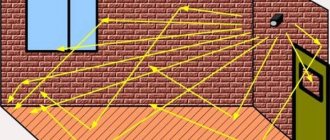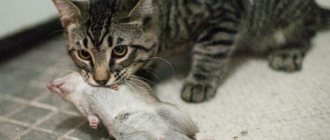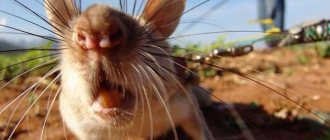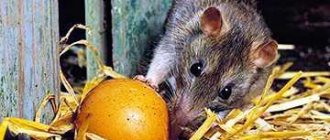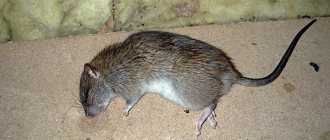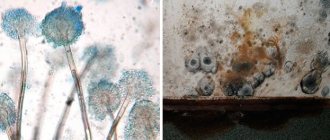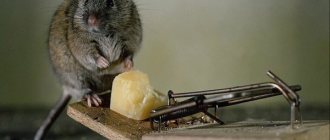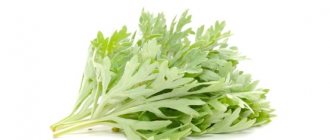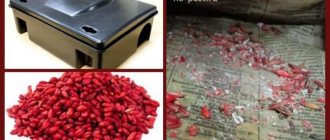Cellars in which vegetable supplies are stored for the winter are favorite habitats for rodents. They not only destroy the harvest, but also spread infectious diseases that are dangerous to humans. Rodents reproduce quickly, so as soon as you notice traces of their vital activity in your storage, immediately declare war on them.
In this article we will tell you whether mice eat potatoes and how to keep potatoes away from rats underground.
Ways to control rodents
There are many techniques that can be used to get rid of pests in the underground. They include both folk methods and achievements of science and technology.
Depending on what kind of rodent has entered the vegetable storehouse, the methods of dealing with it also differ.
With mice
The most popular method of dealing with mice is mechanical, that is, using mousetraps or glue. Both kill the animal.
Mousetraps
This is a universal tool for catching and destroying mice. In order for an animal to fall into a trap, bait is placed in it, which will attract the victim.
Important! Mice do not like human smell and avoid it, so when making traps and bait, use rubber gloves.
The main disadvantage of mousetraps is the limitation on the number of individuals caught. Most often, they are designed for only one mouse, after which the trap will have to be recharged. The maximum number that a modern mousetrap can catch does not exceed 8 mice.
The main advantage of the method is the ability to visually monitor the presence of pests in the cellar.
The glue does not kill the rodent immediately, but acts as a trap . Glue is applied to a flat surface, such as a sheet of plywood or cardboard, and bait is placed in the middle.
A caught mouse will no longer run away and die somewhere in a hard-to-reach place. The trap should not be kept - after catching the animal, it is thrown away.
Among the disadvantages, the trap is not for the faint of heart: the pest does not die immediately, you will have to watch its slow death or finish it off yourself.
With rats
Methods for exterminating rats are divided into three types:
To achieve your goal and get rid of rodents, it is certainly recommended to use all these methods in a comprehensive manner.
Rat traps
If there are rats in the cellar and they are carrying potatoes, set up special traps or rat traps. To attract them to the trap, just put a fragrant bait.
The advantage of rat traps is their ease of use and quick results. One of the disadvantages is the limitation on the number of rodents caught.
Attention! Rats are even more dangerous and cunning than mice. If they smell a foreign smell of metal, they may ignore the installed trap.
Ultrasound
Ultrasonic repellers are also capable of driving rats out of the cellar. They make a sound that is unpleasant to rats' ears, which forces them to leave their favorite place.
Reference. The undoubted advantage of such repellers is safety for humans and pets.
The advantage of this method is that you do not have to search for and remove dead individuals. But there are also certain disadvantages:
- you will have to wait at least three weeks of continuous use for an effective result;
- Rodents can become accustomed to one frequency, so purchase devices with an adjustment function.
The use of ultrasound is one of the most humane ways to get rid of pests.
Universal methods
There are a number of universal methods suitable for exterminating both mice and rats.
Mechanical methods of rodent control
Mechanical methods, in addition to the mousetraps and traps discussed above, also include various traps and baits.
Place a bucket of water under a shaky ledge. When the rodent, sensing the smell of the piece of cheese left for it, reaches the treat, the bar will turn over under its weight, and the animal will end up in a bucket of water.
Use this method with others to increase their effectiveness. Traps are placed in different places where pests are expected to live.
When making baits, mixtures are used - for example, wheat flour and building gypsum. Such baits, along with saucers of water, are placed throughout the storage facility. Rodents die after eating poison.
Chemistry against mice
According to experts, pesticides are the most effective weapon against rodents. Science offers various drugs:
- instant action - poisons cause hemorrhage, killing the animal almost instantly, the basement pest does not even have time to move far from the bait;
- long-acting - poisons gradually accumulate in the body of rodents, death occurs after about a week;
- mummifying poisons - after death, the animal’s corpse is mummified and does not emit unpleasant odors.
Chemicals are dangerous not only for rats and mice, but also for people and pets. Keep them out of the reach of children and away from food.
Suitable preparations for home use are “Ratsomor”, “Rakusid”, “Zookoumarin” or “Ratindan”.
On a note . Rodents are smart animals, so after the death of several individuals, the survivors will no longer touch the bait.
Loud sounds
Loud sounds are an original way that will help you say goodbye to rodents forever. There are examples when they put an old tape recorder in a vegetable store and played loud music several times every day for about ten minutes. The pests could not withstand such a sound attack and left the cellar.
Strong odors and their effect on mice
Rodents cannot tolerate strong odors. They will be scared away:
- peppermint, wild rosemary or tansy;
- mothballs, vinegar, burnt rubber;
- cinnamon, cilantro, coriander.
All you need to do is place fragrant “bombs” on the floor and you won’t have to catch the rats - they will leave on their own.
Biological “weapons” and pests
The natural enemy of rodents is the cat. But she will only hunt mice if she is hungry. Hedgehogs and some dog breeds, such as fox terriers, will help in the fight against rodents.
Reference. This method is only effective in a small room.
Traditional methods of fighting rats and mice
Folk remedies will help you cope with rats that eat potatoes in the basement.
Among those safe for humans:
- ash - corrodes the paws, and then, getting on the mucous membrane, the stomach;
- crushed wine cork with vegetable oil and bread - under the influence of gastric juice the mixture swells and causes indigestion;
- smoke or sulfur bomb - used while there is no food in the storage.
How to get rid of potato ladybugs?
The potato ladybug is a small bug with orange wings and body. There are black spots on the wings. The potato ladybug feeds on the leaves without touching the veins. Over time, the leaf begins to dry out and die.
The potato ladybug is practically indestructible. The only way to get rid of it is to spray the bushes with chemicals. But after some time, most likely, the beetles will appear again.
You can use special biological preparations. Their main advantage is that they are harmless to humans. But there is one significant drawback - when it rains, they are quickly washed off from the plants. Therefore, you need to spray the tops on a sunny day.
Is it possible to eat potatoes chewed by mice?
After you destroy the pests, do not forget to carefully sort through the potatoes, discarding damaged tubers. They cannot be eaten.
Important! This work is carried out with rubber gloves to eliminate the risk of getting a dangerous infection.
SES specialists explain that potatoes that have been lightly nibbled by rats must be thoroughly washed and boiled. Only after heat treatment can it be eaten. If the tubers are thoroughly spoiled, it is better not to risk your health and throw them away.
Who can eat potatoes in the ground
Potato tubers can suffer not only from insects and their larvae. No less dangerous are rodents who are not averse to eating nutritious and tasty root vegetables.
The most common of them:
These rodents vary in size and appearance, but they all pose a danger. It doesn’t hurt to find out who gnaws potatoes in the ground, and what animal digs up potatoes.
Description and characteristics
For the fight to be effective, you need to know which rodent has settled on the site. To do this, it would be a good idea to study the description of each of the pests that can eat potato tubers.
| Name | Description |
| Earth rat | Body length reaches 25 cm, tail 7-12 cm, with hair. The coat color is black, sometimes light brown. Able to eat tubers. |
| Mole rat | Body size is about 30-35 cm. Similar to a mole. The legs and tail are very short and almost merge with the body. The ears are not pronounced. The eyes do not function and are practically invisible. The fur is soft and dark. It may not eat, but rather dig up root crops. |
| Vole | The size of the rodent is miniature - only 6-7 cm in length. The tail is short, the fur is gray-brown. Capable of eating tubers completely or nibbling them. |
Important! Damaged root vegetables should not be eaten. They may be contaminated and may require treatment after consumption.
Prevention of rodents
Getting rid of rodents is difficult. They have already adapted to all human tricks and are very tenacious. Therefore, it is easier to carry out preventive work to create unfavorable conditions for rodents than to fight them in the future.
As preventive measures we recommend:
- concrete the floor;
- cover all the cracks;
- install a metal door;
- glaze the windows;
- remove trash;
- make sure that the holes in the ventilation are no more than 50 mm.
These measures are aimed at preventing rodents from entering the cellar. It will not be possible to get rid of them if the pests have already entered the storage facility.
What parasites chew out tubers from the inside?
Parasites that gnaw tunnels in potatoes are very dangerous. With such damage, root crops cannot be stored, and they cannot be used in the future as planting material.
There are four types of parasites that pose a danger to potatoes:
- mole cricket;
- wireworm;
- click beetle;
- potato moth (fluorimea).
To know how to deal with them correctly, you must first of all have an idea of what kind of larvae eat potatoes and who eats the potatoes from the inside in the ground.
Medvedka
This is a rather large insect that belongs to the Orthoptera family. Both the pest itself and its larvae have a very unpleasant appearance. During the season, a mole cricket can lay 400-500 eggs.
Medvedka
This pest can not only damage potato tubers, but also the roots of all crops on the site. Very often, young seedlings suffer from this particular pest, since it gnaws the stems of the seedlings while digging tunnels.
For reference! The mole cricket prefers to overwinter in a pile of manure or compost and lay eggs there.
Wireworm
This pest is a worm up to 3 cm long, yellow or light brown in color. It is the larva of a click beetle. Getting rid of wireworms is quite problematic.
Wireworm
This pest is dangerous because it not only damages potato tubers, but also the stems. This parasite also poses a threat to other plants on the site.
Rodents are carriers of infectious diseases
What to do if mice, rats and other similar rodents gnawed part of the crop. Some were eaten whole, and everything else was bitten off en masse. It is clear that fresh, even in a thoroughly washed state, such vegetables should have no place on the dinner table, but can they be used after heat treatment?
It is known that mice and other rodents are often carriers of diseases dangerous to human life and health. I already wrote about this earlier, when I talked about the case of how we first stored the seeds of cereal green manure in the winter in an unheated barn.
That time we carried out spring cleaning wearing rubber gloves and boots, using special disinfectants, because even the slightest seemingly harmless contact with mouse excrement can end very badly; particles of it can be in the surrounding air in the form of dust.
Therefore, do not take risks and, overcoming the internal feeling of regret for wasted effort and lost time, throw all damaged root vegetables into the trash bin or take them to the compost heap.
Who gnaws potatoes in the cellar in winter?
A zealous owner will quickly discover that someone, in the literal sense of the word, has encroached on his harvest. There are remains of almost completely eaten tubers. The part is damaged according to the principle “what I don’t eat, I bite.” In a short period of time, a significant amount of potatoes can be eaten.
Who can eat tubers in the cellar:
- various molluscs, such as slugs;
- small rodents - rats, mice, less often moles.
Having moved into the cellar, these animals cause great damage to the harvest of potatoes and other vegetables and cause other significant troubles. The main pests of potatoes were and remain rats and mice.
Attention!
These animals carry dangerous infectious diseases, and their waste products are a serious threat to human health and life.
They eat nylon lids on jars with blanks, damage boxes, gnaw holes in the insulation, making nests in it. Rats can damage wooden and concrete surfaces and wiring. In favorable conditions, pests actively reproduce.
If mice and voles gnawed the crop
Last year, I witnessed a neighbor cut a piece of carrots that had been chewed by mice, quickly rinse it in a nearby barrel of tap water basking in the sun, and eat it. There seem to be no consequences, but this hardly indicates the safety of such an act. One person has strong immunity, another has a weaker one, some mice are carriers of dangerous diseases, others are not. In some ways it's like Russian roulette.
If you still intend to eat gnawed vegetables, be sure to wash them thoroughly with soap and heat-treat them.
.
Thorough washing also applies to all store-bought vegetables and fruits, which are stored in warehouses for a long time and transported for months on huge ships and in train cars to their destination. If the mice didn’t gnaw them, then perhaps they at least ran nearby. And even if not, it means that their surface was treated with some kind of drugs that are unlikely to be useful for the human body.
© Ilya Vladimirovich | 2019-07-01 Amateur gardener
Source
Briefly about them
In addition to people, there are many more living creatures in the world who love to feast on hearty tubers. Sometimes they can destroy the entire crop you worked so hard for. All potato pests can be conditionally divided according to their gastronomic preferences:
- Potato leaf lovers. These are Colorado potato beetles, potato flea beetles and leafhoppers.
- Stem eaters. These are the same Colorado beetles and potato flea beetles, as well as potato moths and cutworms;
- Those who eat the roots and the tubers themselves. These are the already mentioned Colorado potato beetle and potato flea beetle, as well as potato cutworm, nematode, mole cricket and wireworms.
They can get into your garden in a variety of ways:
- With the wind, that is, with the air flow;
- With water;
- With gardening equipment;
- With soils;
- With tubers for planting.
Moreover, there are parasites that live in the soil for years, not making themselves known until suitable conditions arise.
It is difficult to fight against all parasites, but prevention can be carried out. Preventive measures include the following:
- Loosening the soil;
- Digging up the garden;
- Treating beds against weeds;
- Regularly changing the place for planting potatoes;
- Complete care during the growing season;
- Seed treatment.
Rodents are carriers of infectious diseases
What to do if mice, rats and other similar rodents gnawed part of the crop. Some were eaten whole, and everything else was bitten off en masse. It is clear that fresh, even in a thoroughly washed state, such vegetables should have no place on the dinner table, but can they be used after heat treatment?
It is known that mice and other rodents are often carriers of diseases dangerous to human life and health. I already wrote about this earlier, when I talked about the case of how we first stored the seeds of cereal green manure in the winter in an unheated barn.
That time we carried out spring cleaning wearing rubber gloves and boots, using special disinfectants, because even the slightest seemingly harmless contact with mouse excrement can end very badly; particles of it can be in the surrounding air in the form of dust.
Therefore, do not take risks and, overcoming the internal feeling of regret for wasted effort and lost time, throw all damaged root vegetables into the trash bin or take them to the compost heap.
Nematodes
Such insects are microscopic and cannot be seen without special instruments. Traces of their influence are visible only on the roots of the vegetable crop; they are expressed in the form of small yellowish grains.
A bush infected with nematodes lags behind in development. The leaves turn yellow and fall off, and tubers may not set at all.
Methods of protection against nematodes
Nematodes have a detrimental effect on harvesting, so no expense or effort should be spared in the fight against them. When choosing protection, you should choose methods that have been proven over the years.
To avoid contamination of the soil and tubers, the planting location of the vegetable should be changed every 4 years. In place of potatoes, you need to plant legumes that neutralize the pest and cleanse the soil.
Planting varieties that are resistant to these types of insects will help in the fight against the worm. It is also necessary to treat the sown soil with a solution of copper sulfate.
Damaged and cracked potatoes
Cracks can appear when there is a sharp alternation of weather conditions during potato growth: heavy rains, then drought lead to the fact that the potatoes grow unevenly. As a result, cracks appear. These tubers are safe to eat.
Also, during harvesting, using a shovel or pitchfork can damage the tubers. They need to be eaten first and not stored for a long time, since the damaged area will contribute to the infection of the potatoes. As a result, it poses a danger to human health.
Tubers spoiled by pests
Tubers spoiled by pests: mice, rats must be thrown away immediately. Rodents carry many dangerous diseases.
Tubers eaten by wireworms are not dangerous to eat, but it is better to eat them as quickly as possible. Because the holes made by the wireworm can become a gateway to infections. If there are a lot of holes, then it is better to throw away the tubers.
Do you know how dangerous damaged green potatoes are?
The original article
and other materials can be found on our website
Tips for storing potatoes
To summarize, put it in storage
- only late potato varieties
- only healthy potatoes
- Beetroot can act as a “neighbor”; it absorbs excess moisture
- observe storage temperature (from 5 to 10Cº)
- must be protected from light
- sort through the potatoes more often
In any case, you should approach the preservation of tubers wisely, and then the second bread will be preserved without loss. And your favorite potato dishes will be able to please and delight summer residents all winter!
See also:
Rodents are a huge problem in the country, not only for the house, but also for the site. Mice and rats can be very dangerous to humans and crops grown in the garden. For this reason, gardeners have to come up with and use a variety of ways to combat such pests. There are many specialized, well-thought-out measures that will get rid of mice not just at once, but for a long period. These can be preventive procedures, the use of chemicals, mechanical repellers and even folk remedies.
Causes of soil pests of potatoes
Preventing pests is much easier than fighting them. To do this, you need to know why they appear in the soil. Generally, there are three main reasons.
Important! Regular waterlogging of the soil can also aggravate the problem. In nutritious and moist soil, pests settle and reproduce more readily. If it rains, it is better not to water the garden.
It is equally important to follow the rules of crop rotation. You cannot plant potatoes in one area for several years. This will lead to an increase in the number of pests. It is also necessary to destroy (burn) tops and other waste after harvesting.
General control and prevention measures
From the above reasons for the appearance of pests in the soil, several general recommendations follow that will help prevent the appearance of pests in the soil. To do this you need:
Following these simple rules will help prevent pests from appearing in the soil and eliminate the need to deal with them.
